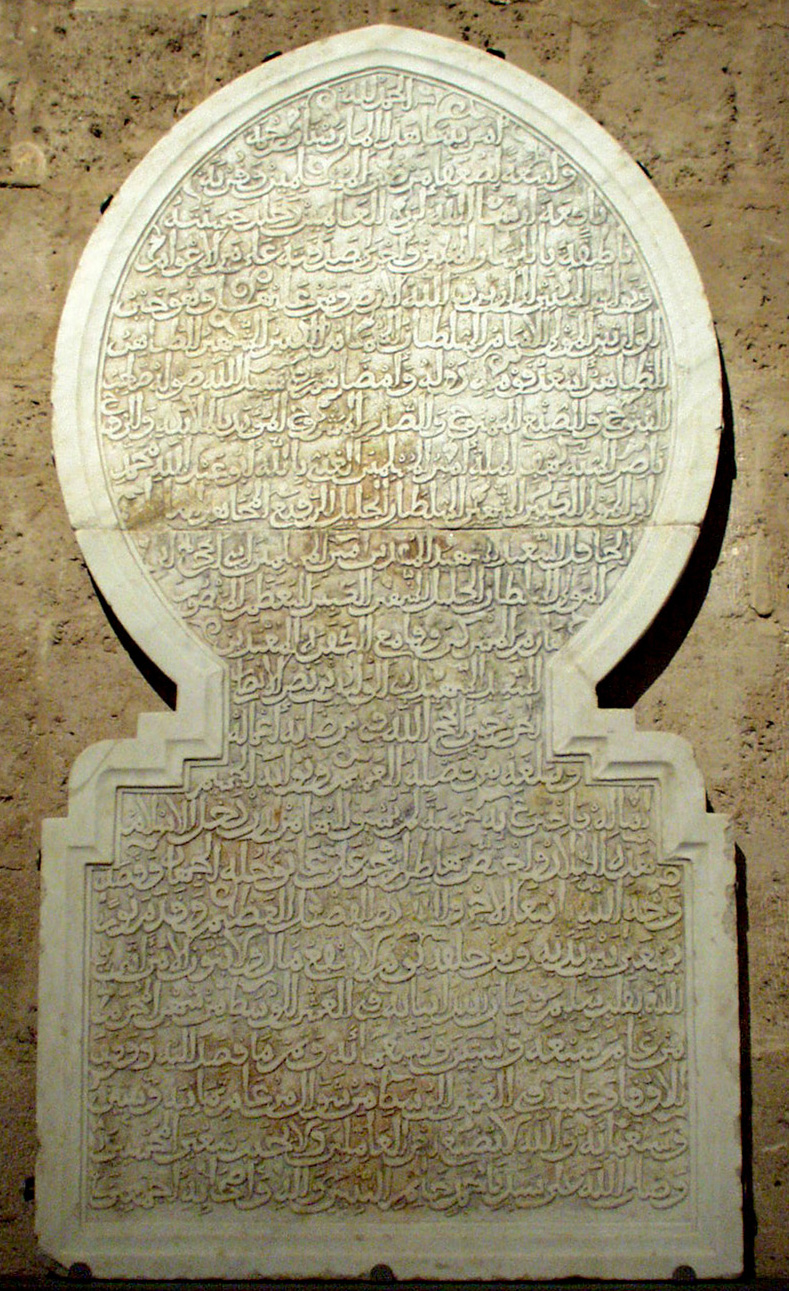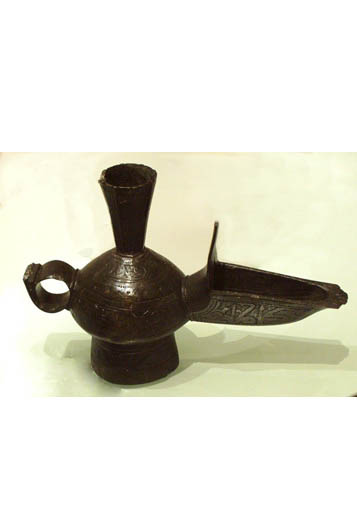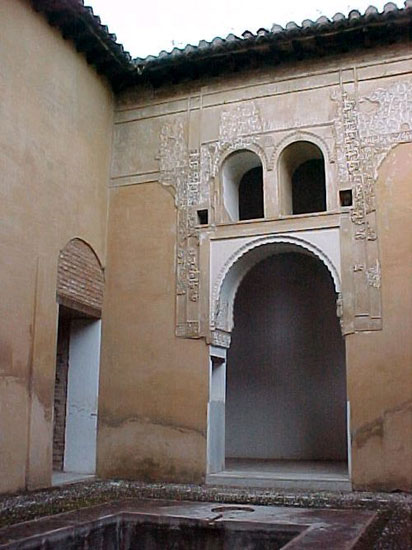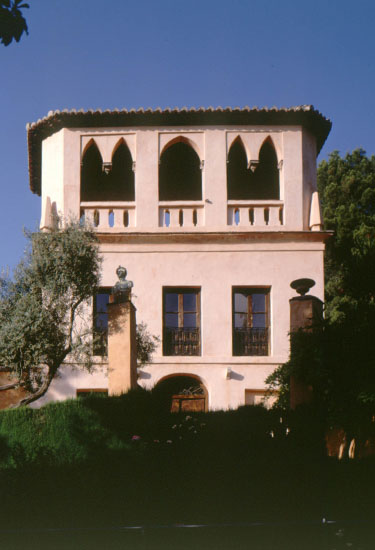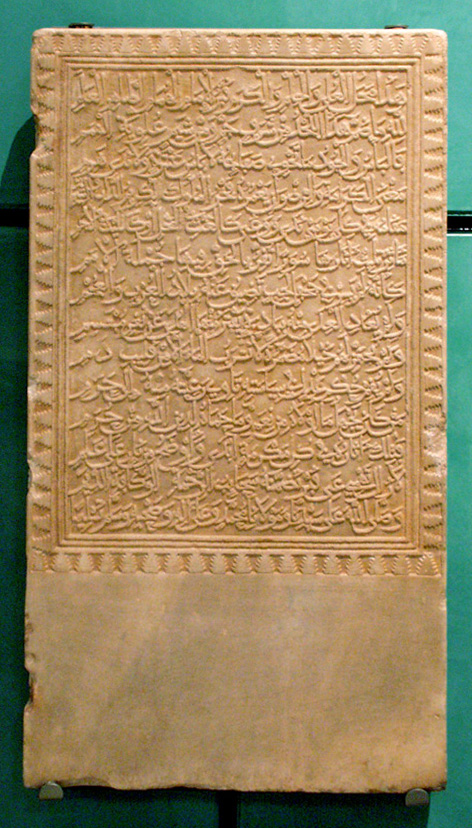Two Decorated Nasrid Tiles
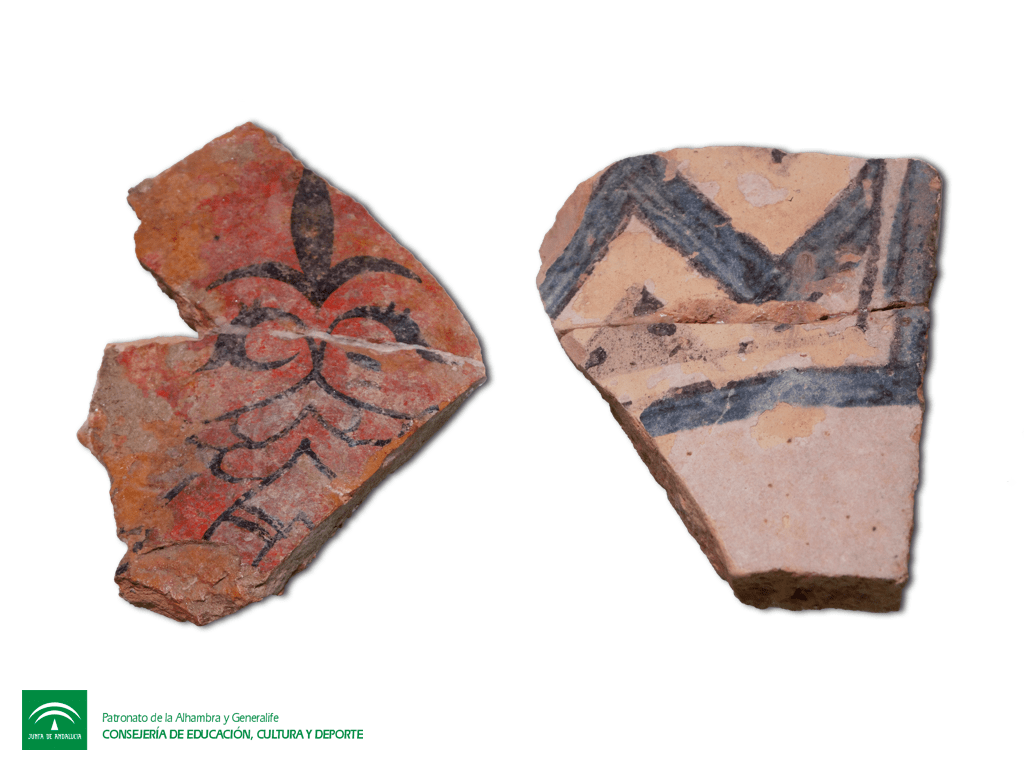
Elena Gómez García
In the most noteworthy Nasrid residences, we find tiled roofs and eaves which on occasions were embellished with architectural ceramics. Tiles were used throughout the Hispano-Muslim world to protect the house and channel rainwater off the roof. In the Museum of the Alhambra there are two fragments of tiles from country residences close to the Alhambra: al-Disar (Alijares) and Yanat al- Arif (Garden of the Master-Builder).
Both fragments are made of ceramic and it is possible to imagine the conical shape that each complete piece would have had. The first fragment has a black line decoration creating ribbon and zigzag shapes filled in with blue, on a white background. In the second piece we can better appreciate the typical curve of the Arabic tile. The outside part of the tile is bathed in red slip, on which there is a drawing in black of a palmette motif with other superimposed palms. Black is used to draw the lines and also to colour in the spaces.
These tile fragments show that tiles had both a functional and decorative use. If we analyse the manufacturing techniques we find a variety of bizcochado (unvarnished ceramic), monochrome enamel and on occasions the surface finish even has decorative drawings as in these examples. They may have been placed in very specific parts of Nasrid houses, which with such beautiful finishes would have stood out from those around them.
Place: Room V, Museum of the Alhambra, Palace of Charles V





 Contact
Contact






